Hello guys, I am @arhasan. How are you all ?
I am fine with your prayers.
I decided it last night I woke up this morning and I will plant trees. So I woke up in the morning and I went to the back of the house to collect the basil tree. In the current situation, it is difficult to open a nursery and going out is risky. So I thought let's see a little behind the house there are many saplings which will be much better if planted a little better and taken care of.
So I collected them today.
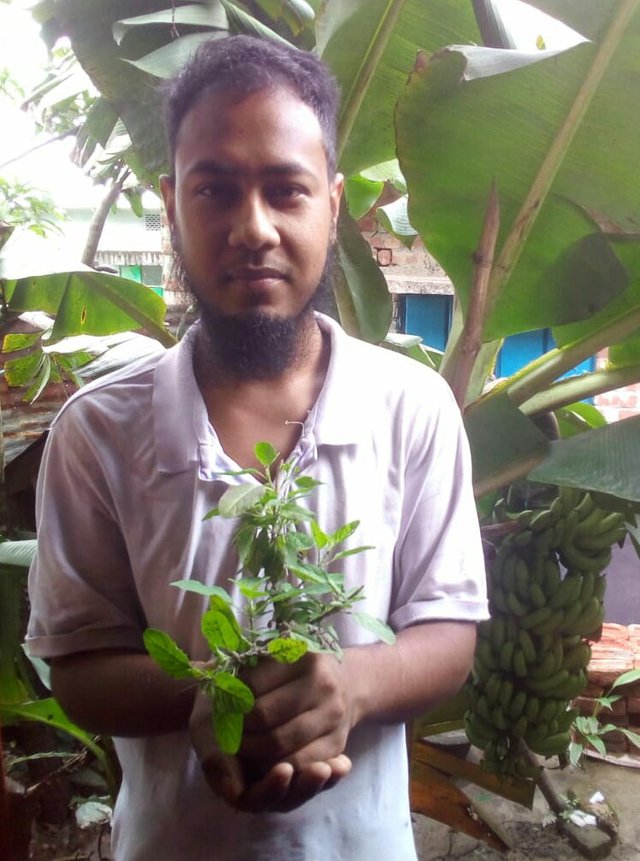
And I planted the seedlings in the soil mixed with fertilizer. Although the tree is small but its benefits are many. I discussed this in detail below. I hope you will also plant this tree knowing about it and take advantage of it.
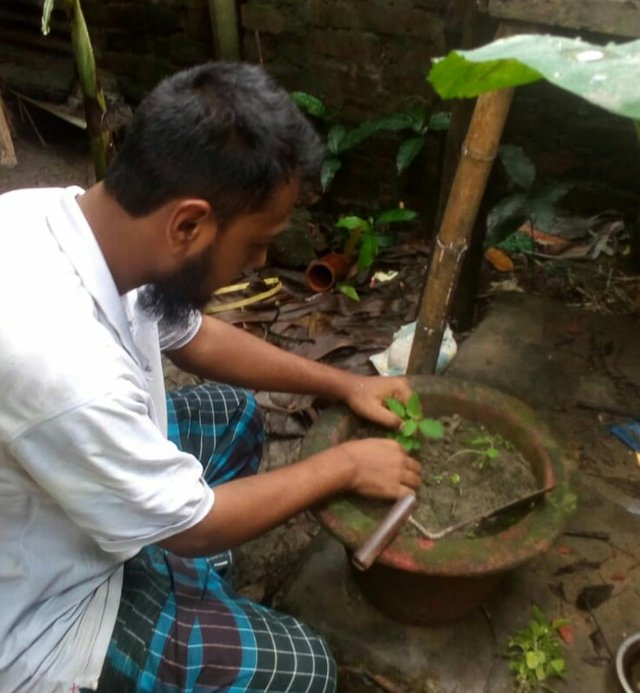
You don't need too much space to plant basil tree. This tree grows beautifully only if it is a medium sized tub and placed in a place where light comes.
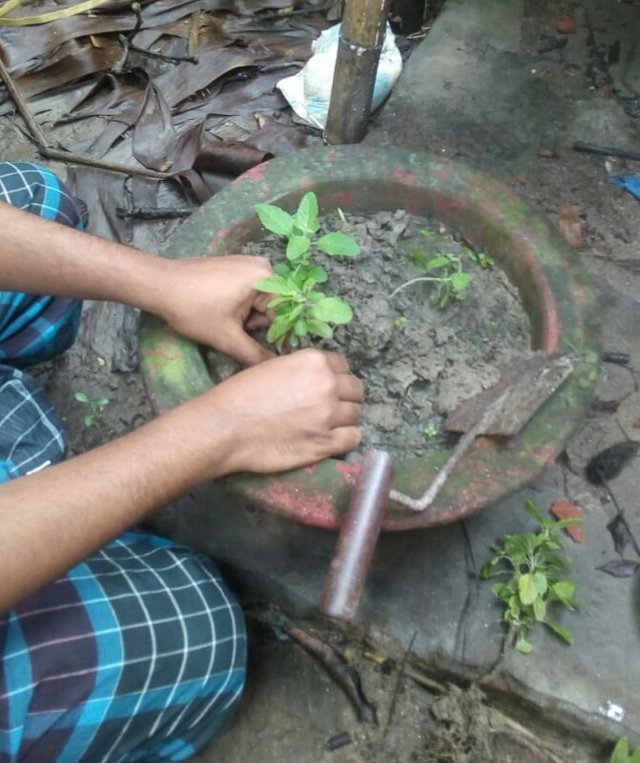
★ Tulsi (basil tree)★
Ocimum tenuiflorum
(synonym Ocimum sanctum), commonly known as holy basil or Tulsi, is an aromatic perennial plant in the family Lamiaceae. It is native to the Indian subcontinent and widespread as a cultivated plant throughout the Southeast Asian tropics.
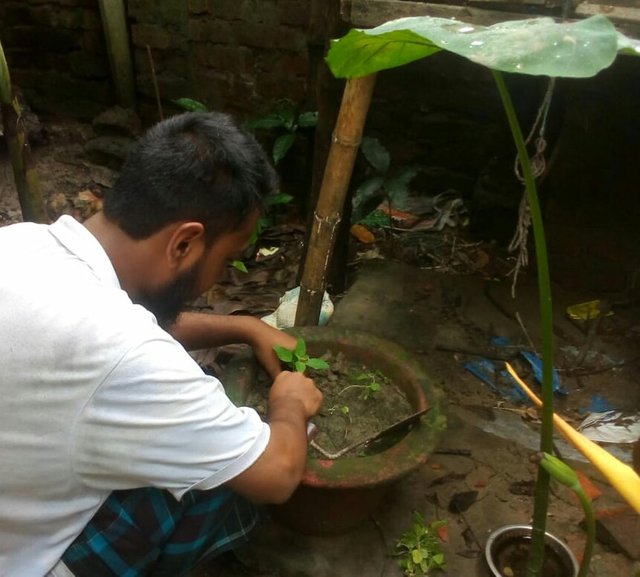
★Scientific classification★
Kingdom: Plantae
Clade: Tracheophytes
Clade: Angiosperms
Clade: Eudicots
Clade: Asterids
Order: Lamiales
Family: Lamiaceae
Genus: Ocimum
Species: O. tenuiflorum
Tulsi is cultivated for religious and traditional medicine purposes, and for its essential oil. It is widely used as a herbal tea, commonly used in Ayurveda, and has a place within the Vaishnava tradition of Hinduism, in which devotees perform worship involving holy basil plants or leaves.
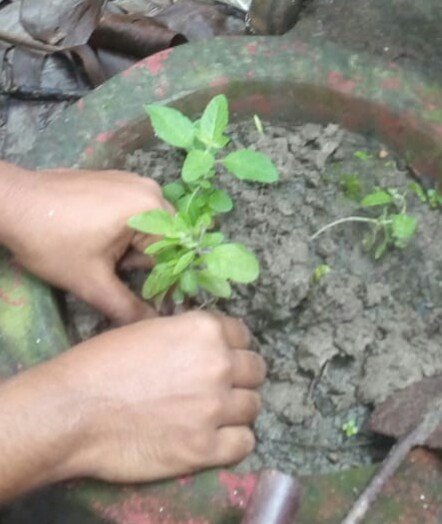
★ Morphology ★
Holy basil is an erect, many-branched subshrub, 30–60 cm (12–24 in) tall with hairy stems. Leaves are green or purple; they are simple, petioled, with an ovate, up to 5 cm (2.0 in)-long blade, which usually has a slightly toothed margin; they are strongly scented and have a decussate phyllotaxy. The purplish flowers are placed in close whorls on elongated racemes.
The three main morphotypes cultivated in India and Nepal are Ram tulsi (the most common type, with broad bright green leaves that are slightly sweet), the less common purplish green-leaved
(Krishna tulsi) and the common wild vana tulsi.
★ Uses ★
Tulsi (Sanskrit:-Surasa) has been used in Ayurveda and Siddha practices for its supposed treatment of diseases. For centuries, the dried leaves have been mixed with stored grains to repel insects.
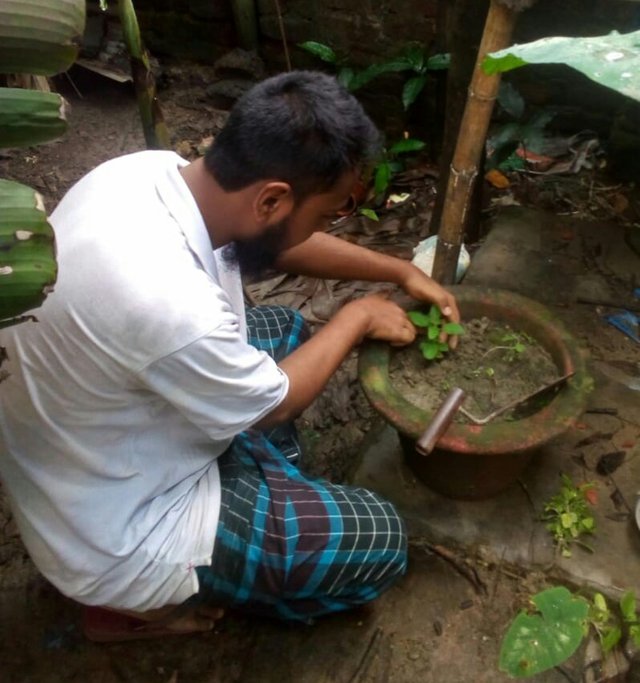
I hope everyone understands the benefits of basil tree. Everyone should plant more trees whether it is a big tree or a small tree.
Planting trees and save the environment. Happy planting.
Thank you.
Good job dear..
Carry on.
❤
Downvoting a post can decrease pending rewards and make it less visible. Common reasons:
Submit